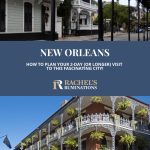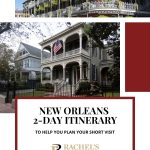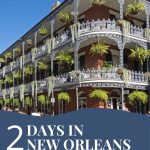New Orleans 2-day itinerary: Planning your visit
A guest post by Karen Warren
“The Big Easy” is a city brimming with life. Streets full of trademark Spanish architecture, jazz musicians and restaurants serving traditional Cajun and Creole cuisine. The broad Mississippi River and a sometimes surprising hinterland. This is New Orleans, a place that everyone has heard about but which has to be seen to be believed.
Here are my recommendations for planning your trip to New Orleans. I’ve structured this in the form of a 2-day itinerary, but seeing everything listed would take weeks; it’s a matter of making choices.
Disclosure: This article contains affiliate links. If you click on one and make a purchase, I (Rachel) will receive a small commission. This will not affect your price.
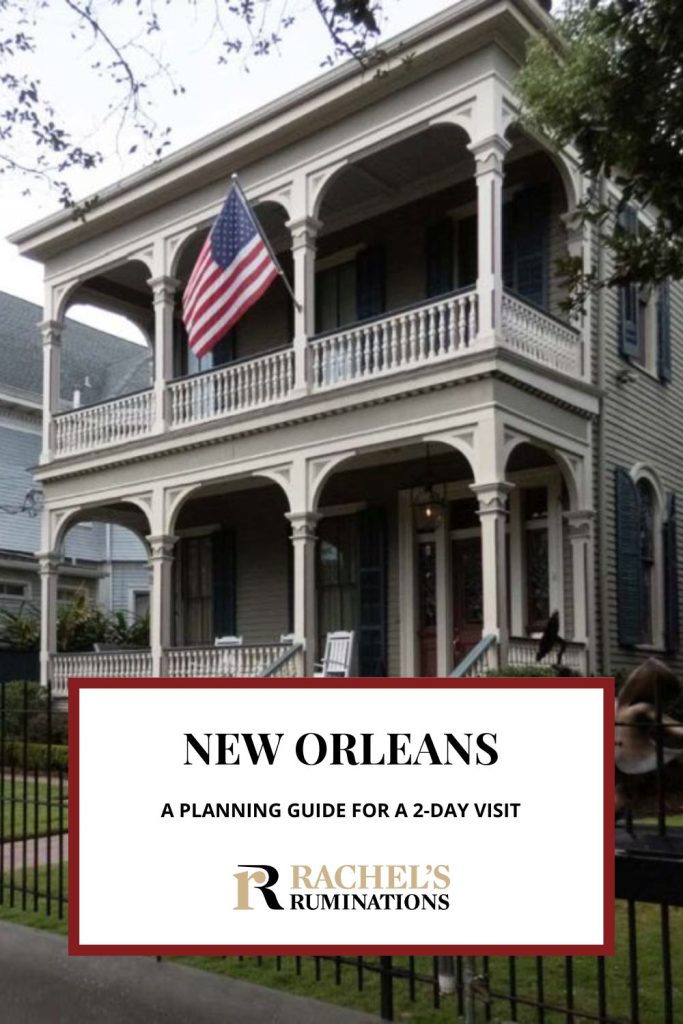
Why Visit New Orleans
But first, why visit New Orleans? For many visitors the main attraction is the French Quarter with its wrought-iron balconies and numerous shops and restaurants. Outside the French Quarter are other districts to explore, with parks, museums, and – of course – the famous Mississippi River.
Venture a short way outside the city and you’ll enter plantation country. Here you’ll find historic sites and a distinctive landscape. And a little further afield are the lesser-known cities of southern Louisiana where you can experience southern charm without the tourist crowds.
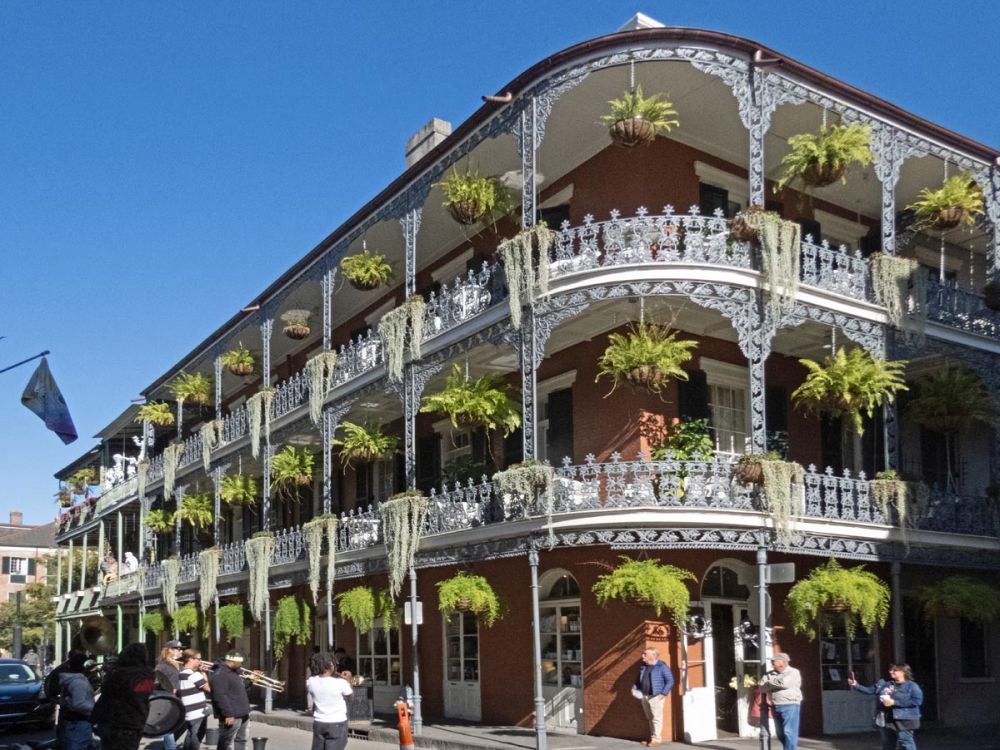
Note: If you’re planning on seeing a lot of the sights in New Orleans, buying a GoCity Pass could save you quite a bit of money. It includes most of the sights mentioned below.
Day 1: The essential New Orleans sights
On Day 1 of your New Orleans itinerary, see all of the classic NOLA sights: the French Quarter, the Mississippi River, the French Market and the Garden District.
The French Quarter
Start your visit just by walking around the French Quarter, soaking up the lively atmosphere. Listen to the street musicians and peer inside the shops and restaurants. Some of the shops will be selling souvenirs; others may specialise in voodoo items.
The locals will tell you to avoid Bourbon Street, the main thoroughfare and tourist trap. But you might prefer to walk along the street just once, to pick up the vibe. Avoid it in the evenings when the drunken hordes take over. Take a look, then explore the side streets where you’ll find more authentic spots for eating and shopping.
Look closely at the buildings as you walk. They may all appear to be of a similar style with plants tumbling over cast-iron balconies and half-glimpsed inner courtyards. However further inspection will reveal a remarkable variety of styles and architectural detail.
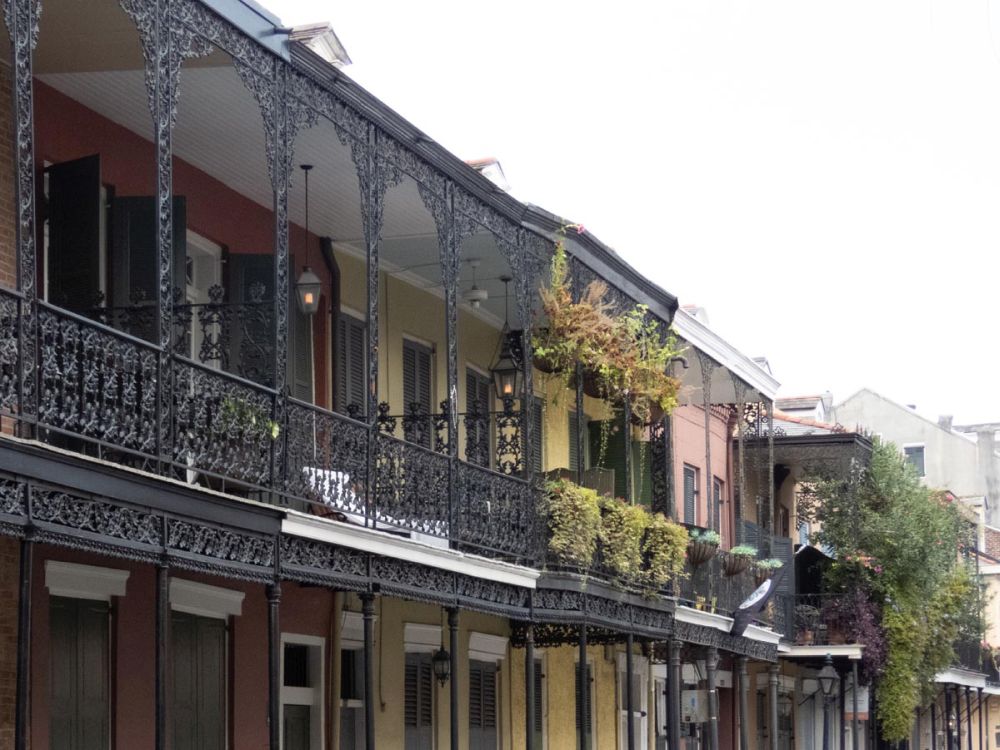
Don’t miss St Louis Cathedral, the oldest cathedral in North America, right on Jackson Square, the heart of New Orleans.
The Cabildo and the Presbytère are matching Spanish Colonial buildings framing the Cathedral on either side, and both date to the late 1700s, like the Cathedral. They’re both part of the Louisiana State Museum. If you’re interested in New Orleans and Louisiana history, visit the Cabildo. The Presbytère houses two exhibitions: one about Mardi Gras, and the other about Hurricane Katrina.
Cross Jackson Square and climb up to a viewpoint in Washington Artillery Park, where you’ll get your first view of the Mississippi.
The famous Café du Monde is right nearby on the corner. It dates to 1862, and it’s a great spot to take a break over a cup of café au lait. Make sure to try the local specialty with your coffee: a beignet. It’s a fried dough ball covered in sugar.
If you’re into antiques, go to Royal Street, where you’ll find lots of antique shops between Iberville and Toulouse Streets.
The Mississippi River
After the French Quarter, the Mississippi River must be the best-known sight in New Orleans. The Moonwalk Riverfront Park is a popular promenade along the waterside, with music, artworks and – of course – views of the river and of the boats that travel along it. It runs past the French Quarter, ending at the Aquarium of the Americas.
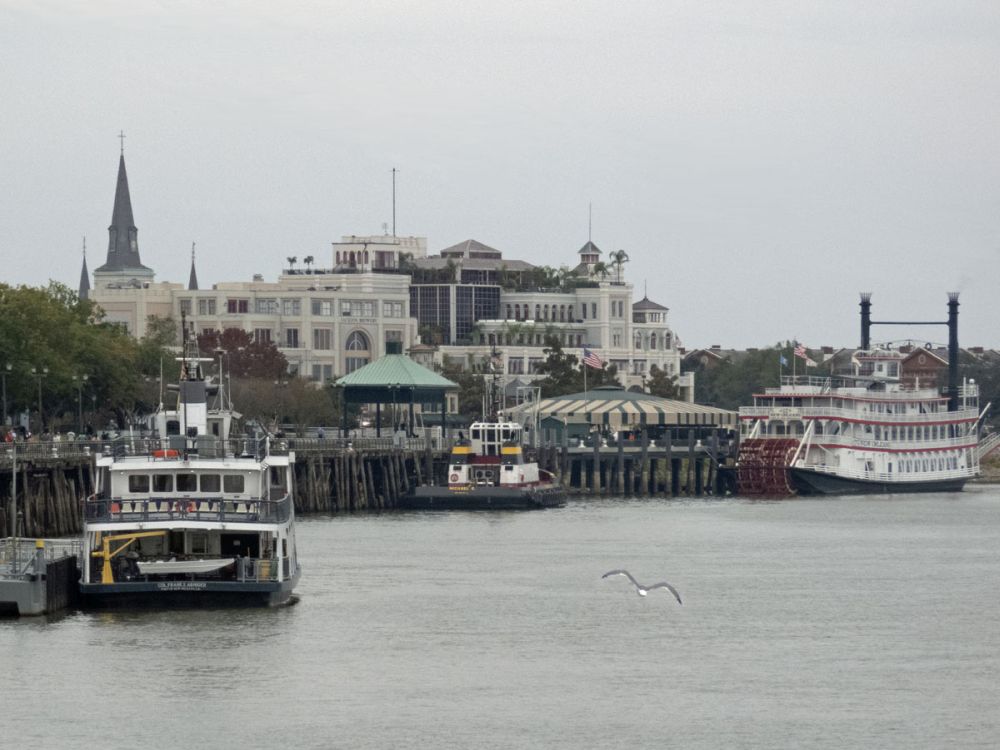
Taking a boat trip along the Mississippi might sound a very touristy thing to do, but I can recommend it as a way to see the river and to learn a bit more about the city. I took a trip to the Chalmette Battlefield, site of the Battle of New Orleans in 1812, on a paddlewheeler, the Creole Queen. We had an excellent commentary along the way, not just about the battle, but also about the city, its architecture and even its industrial history. And on the way back, Charles, our guide, gave a very powerful first-person account of Hurricane Katrina and the devastation that it caused to the city.
French Market and the Garden District
The City of New Orleans is much more than just the French Quarter. The French Market isn’t far from the French Quarter; it’s a great place to pick up lunch or to do some flea market shopping. The whole French Market district is great for shopping, especially the little art galleries and clothing boutiques.
I stayed in the Garden District, a former plantation which gave way to large private houses in the 19th century. The Upper Garden District in particular is regarded as having some of the best preserved historic mansions in the southern states, and is a National Historic Landmark. A walk around this area, with its quiet tree-lined streets, makes a stark contrast to the frenetic activity of the French Quarter!
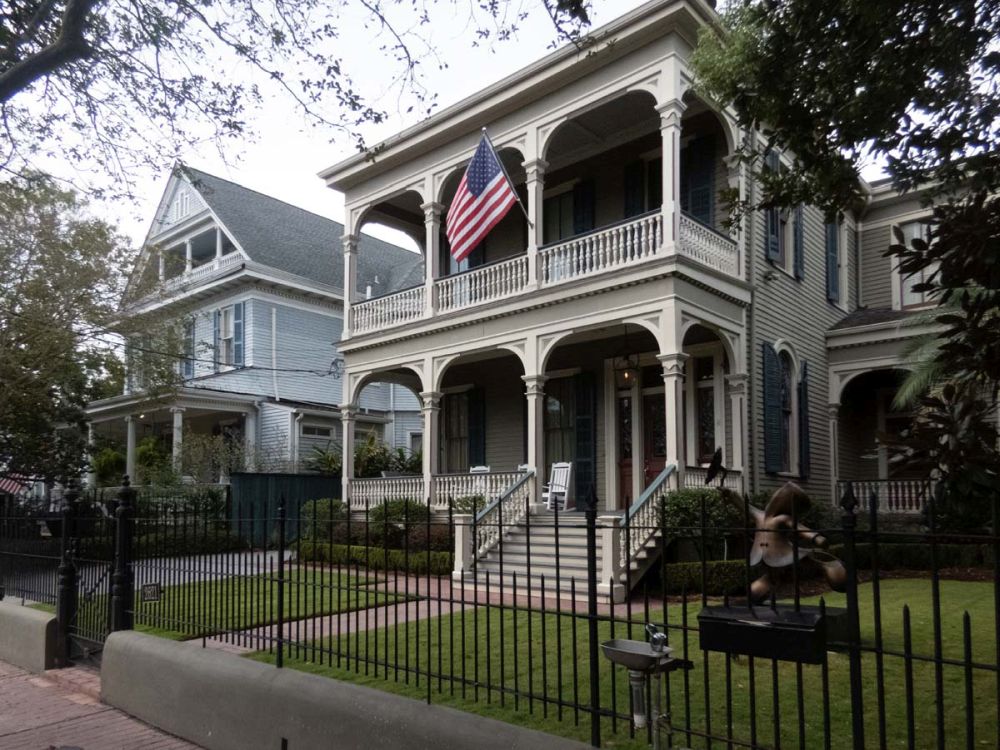
Day 2: Lots of options
While I called this a 2-day New Orleans itinerary, there is far more to do than you could manage in two days. So Day 2 depends on your interests. Peruse a museum or two, find the street art, or tour a cemetery! Here are some options for today:
Museums Of New Orleans
In the French Quarter look out for the Historic New Orleans Collection. This is a collection of historic buildings, interesting both for their displays on the history of the city and of Louisiana, and for the buildings they are housed in. The Cabildo and the Presbytère, mentioned above, are among them. And there are lots of tiny specialist museums, covering subjects as diverse as pharmacy or Mardi Gras traditions.
- The Hermann-Grima and Gallier Historic Houses are two National Historic Landmarks: 19th-century historic homes where you can learn about life in what was a very diverse and dynamic society.
- The Historic Voodoo Museum is the place to learn about the unique voodoo culture that developed in New Orleans.
- Try the Museum of Death if you’re in the mood for something more gruesome.
- The Old Urseline Convent Museum is another historic building: the “oldest building in the Mississippi Valley.” It serves as a Catholic Cultural Heritage Center.
- The New Orleans Pharmacy Museum covers the history of pharmacy, particularly here in Louisiana. The building it’s in dates to 1822 when it housed an apothecary.
In the French Market Quarter, visit the New Orleans Jazz Museum, housed in the Old US Mint Building.
Between the French Quarter and the central business district, right on Canal Street, is where you’ll find Sazerac House, best described as a museum of drink, particularly New Orleans’s famous Sazerac.
In the Warehouse District you can find the National World War II Museum and the Museum of the Southern Jewish Experience.
The Lower Garden District is home to the Southern Food and Beverage Museum, which includes the Museum of the American Cocktail. Here you can learn everything there is to know about the different culinary traditions of the southern states. You may also have the opportunity to take a cookery class, or to eat in the café. Mardi Gras World, also in the Lower Garden District, is where visitors can watch as the ornate floats for the Mardi Gras parades are built.
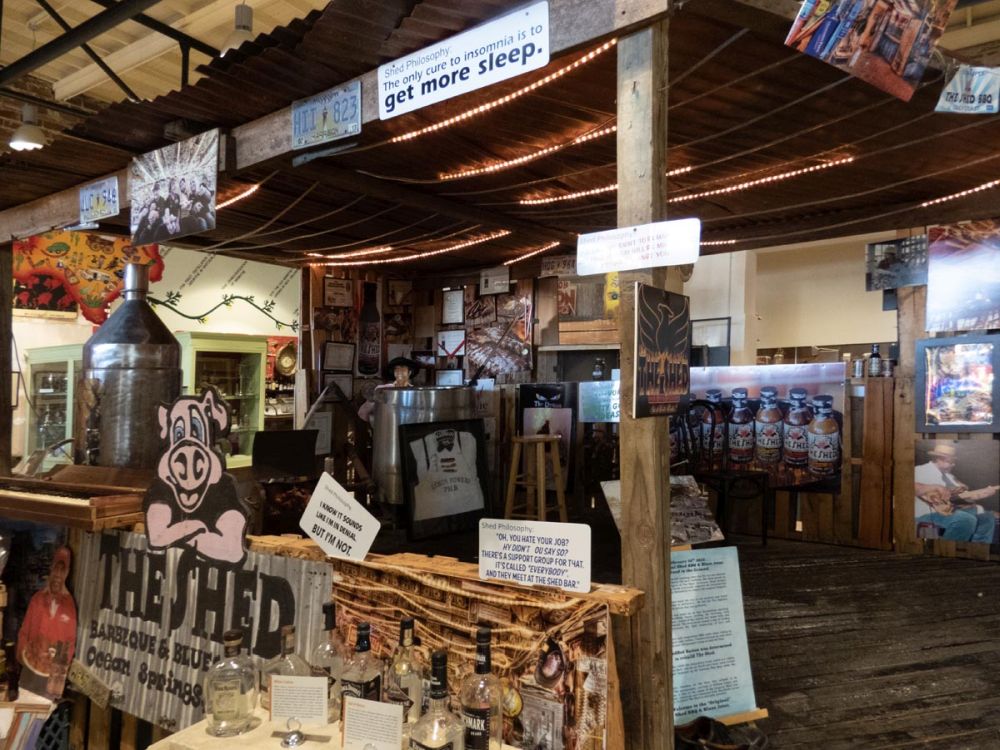
Inside City Park, you’ll find the New Orleans Museum of Art, with some European paintings and an interesting collection of modern art. The Besthoff Sculpture Garden and the New Orleans Botanical Garden are in the park too. You’ll also find miles of nature trails, places to eat, and a whole host of leisure activities. The Louisiana Children’s Museum, a place of hands-on educational experiences, is also located in the park.
If you are planning to visit any of the city’s museums make sure that you check opening times in advance as they may close on some days.
Voodoo and cemeteries
New Orleans is a spooky city, as I discovered when visiting in mid-October to find that Halloween decorations were everywhere. Walk around the French Quarter and you’ll see manifestations of voodoo, witchcraft and the paranormal in places like the Voodoo Museum, Marie Laveau’s House of Voodoo or the Voodoo Spiritual Temple.
Ghost tours abound, and – perhaps surprisingly – so do cemetery tours. The city’s forty-two fabulously ornate cemeteries with lots of very elaborate above-ground tombs are a peculiarly New Orleans “attraction”. The most visited is St. Louis Cemetery No. 1, near the French Quarter. You can explore the cemeteries on your own, take a walking tour, or even join a “Voodoo Tour”!
Day trips from New Orleans / Travel around Louisiana
If you are staying in New Orleans for more than a few days you may choose to explore more widely. Options exist to take a swamp tour (teeming with plants and wildlife) and to visit former plantation houses. I’d especially recommend the beautiful antebellum Oak Alley Plantation in Vacherie, Louisiana. There you can both witness the splendor of the main house and learn about the enslaved people who made it possible. Also visit the Whitney Plantation, with historic buildings including the original main house, but also a barn, an overseer’s house and two slave dwellings. It is specifically focused on the legacy of slavery before the Civil War in the United States. It is very well worth a stop.
Or you could rent a car and travel further afield to cities such as Baton Rouge or Lafayette. (Read more about Exploring Southern Louisiana.)
What to eat and drink in New Orleans
New Orleans is well known for its Cajun and Creole cuisine, characterised by crawfish, red beans and lots of hot sauce. Famous dishes include crawfish étouffée (a thick stew), red beans and rice, and jambalaya. Then there are the local po-boys, a sort of sandwich stuffed with lots of meat or fish, garnish and dressings.
I have to confess that I’m not a great fan of New Orleans food as it tends to be battered, deep-fried and covered in sauce, and fresh vegetables are sometimes in short supply. Vegetarian options are not always available – even meals that appear to be meat-free may have added meat or lard. But if you are happy to eat meat or fish (often both in the same dish), and you are not on a diet, you can eat very well in New Orleans.
Drinks are another matter. New Orleans is famous for its cocktails, many of which were invented here, including the bright red rum-based Hurricane. Beer is also popular, with several local microbreweries.
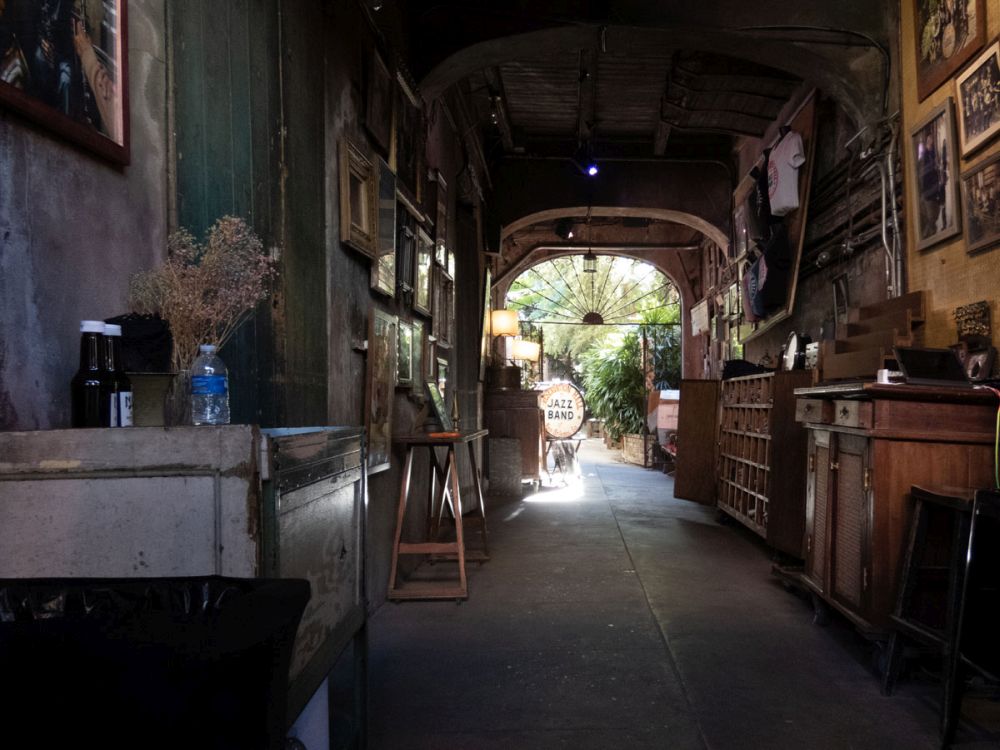
Jazz music
New Orleans is generally considered to be the birthplace of jazz, which arose here in the early 20th century. Remember that you can find the best jazz music in the bars, restaurants and jazz clubs of the French Quarter in the evening. In fact, you will hear it wherever you go, from impromptu street bands to lone street performers to background music in the bars and on the river boats. But at least one evening of your trip, sit down and enjoy a meal while you soak in the sounds of live music. Look at local listings to see who’s playing where.
Practical information for your trip to New Orleans
Getting there
Flights are available to Louis Armstrong Airport from cities around the US. Visitors from Europe can take a direct flight from London Heathrow. Buses run from the airport to the city centre, but can be slow and infrequent. You may find it easier to take a taxi (fixed fares apply).
Getting around
Buses and streetcars are handy for getting around the city, and you can buy a Jazzy Pass online. However, you may have to wait for a bus to appear – it’s not always the quickest way of getting anywhere! The famous and very picturesque St Charles streetcar line follows St. Charles Avenue and is an easy way to get from the French Quarter to the central business district and the Warehouse District, and then to the Garden District. Other streetcar lines run up and down Canal Street and along the riverside up to French Market.
Walking is often the best way to get around crowded areas. However some areas of the city are not really designed for pedestrians – it is advisable to avoid areas with heavy traffic and dark underpasses. And watch out for uneven pavements!
When to visit
Weatherwise, the best times to visit New Orleans are winter and spring – the summers can be very hot and autumn is hurricane season. Mardi Gras – the very popular carnival celebration – runs from 6 January until Shrove Tuesday. This is peak time for tourists, and best avoided unless you are actually here for the festivities.
Pre-reading
If you’d like to do some pre-trip reading have a look at this post – Books To Read Before You Visit New Orleans.
About the author: Karen Warren is a freelance writer, book reviewer and novelist. She writes about travel on her website WorldWideWriter.
My travel recommendations
Planning travel
- Skyscanner is where I always start my flight searches.
- Booking.com is the company I use most for finding accommodations. If you prefer, Expedia offers more or less the same.
- Discover Cars offers an easy way to compare prices from all of the major car-rental companies in one place.
- Use Viator or GetYourGuide to find walking tours, day tours, airport pickups, city cards, tickets and whatever else you need at your destination.
- Bookmundi is great when you’re looking for a longer tour of a few days to a few weeks, private or with a group, pretty much anywhere in the world. Lots of different tour companies list their tours here, so you can comparison shop.
- GetTransfer is the place to book your airport-to-hotel transfers (and vice-versa). It’s so reassuring to have this all set up and paid for ahead of time, rather than having to make decisions after a long, tiring flight!
- Buy a GoCity Pass when you’re planning to do a lot of sightseeing on a city trip. It can save you a lot on admissions to museums and other attractions in big cities like New York and Amsterdam.
Other travel-related items
- It’s really awkward to have to rely on WIFI when you travel overseas. I’ve tried several e-sim cards, and GigSky’s e-sim was the one that was easiest to activate and use. You buy it through their app and activate it when you need it. Use the code RACHEL10 to get a 10% discount!
- Another option I just recently tried for the first time is a portable wifi modem by WifiCandy. It supports up to 8 devices and you just carry it along in your pocket or bag! If you’re traveling with a family or group, it might end up cheaper to use than an e-sim. Use the code RACHELSRUMINATIONS for a 10% discount.
- I’m a fan of SCOTTeVEST’s jackets and vests because when I wear one, I don’t have to carry a handbag. I feel like all my stuff is safer when I travel because it’s in inside pockets close to my body.
- I use ExpressVPN on my phone and laptop when I travel. It keeps me safe from hackers when I use public or hotel wifi.



